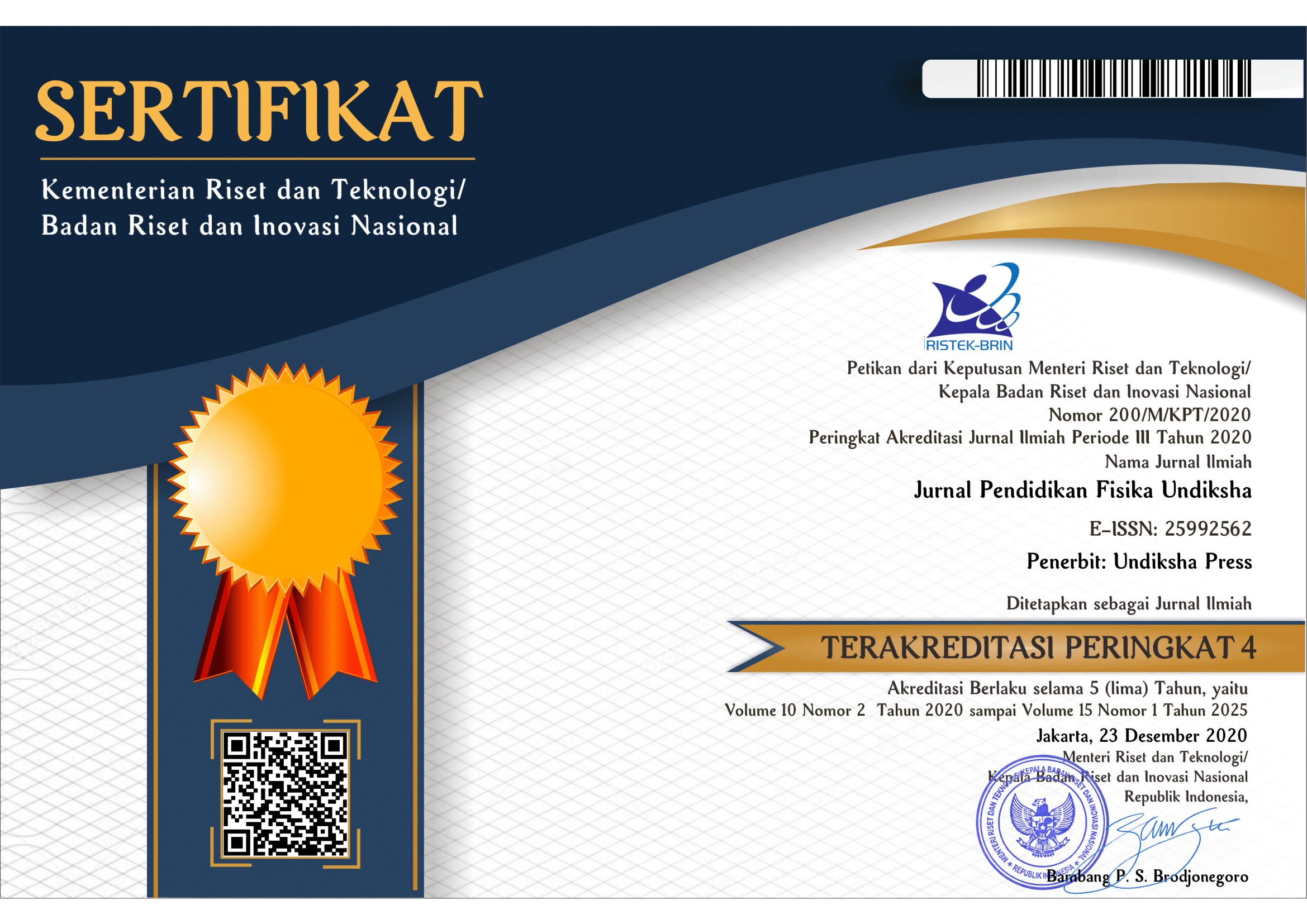PENERAPAN MODEL PEMBELAJARAN KOOPERATIF TIPE STAD SEBAGAI UPAYA MENINGKATKAN MOTIVASI DAN PRESTASI BELAJAR FISIKA SISWA
DOI:
https://doi.org/10.23887/jjpf.v3i1.7244Abstract
Tujuan penelitian ini adalah: (1) meningkatkan motivasi belajar, (2) meningkatkan prestasi belajar, dan (3) mendeskripsikan tanggapan siswa terhadap penerapan model STAD. Penelitian ini adalah penelitian tindakan kelas yang melibatkan 35 siswa kelas X 3 SMA Negeri 1 Srono pada semester genap tahun pelajaran 2015/2016. Data motivasi dan tanggapan terhadap model pembelajaran kooperatif tipe STAD dikumpulkan dengan kuisioner. Data prestasi belajar siswa dikumpulkan dengan tes. Penelitian berhasil jika, ketuntasan klasikal 85% , KKM 75, motivasi belajar dalam kategori tinggi, dan tanggapan siswa berkategori positif. Hasil penelitian menunjukkan bahwa: 1) penerapan model STAD dapat meningkatkan motivasi belajar (x ̅ siklus I = 74,03 dengan kategori tinggi, x ̅ siklus II = 76,60 dengan kategori tinggi), 2) penerapan model STAD dapat meningkatkan prestasi belajar (x ̅ siklus I = 79,29 dengan ketuntasan klasikal 77,14%, x ̅ siklus II = 82,28 dengan ketuntasan klasikal 91,43%); dan 3) tanggapan siswa terhadap penerapan model STAD berkategori positif (x ̅ = 77,2).Kata Kunci : motivasi belajar, pembelajaran kooperatif tipe STAD, prestasi belajar.
This study aimed at (1) improving learning motivation, (2) improving learning achievement, and (3) describing the students' responses toward the implementation of STAD model. This research was a classroom action research which was conducted in two cycles of learning and involved 35 students of grade X 3 of SMAN 1 Srono in even semester of academic year 2015/2016. Data of motivation and the responses toward the STAD model were collected by questionnaire, while data of students’ learning achievement were collected by a multiple-choice test. Research was called to be success if classical completeness was 85% with KKM 75, learning motivation was in the category “high”, and the student responses were categorized positive. The results show that: 1) the implementation of STAD model can increase learning motivation (cycle I = 74,03 with high category, the second cycle = 76,60 with high category), 2) the implementation of STAD model can improve learning achievement (x ̅ of cycle I = 79,29 with 77,14% classical completeness, x ̅ of cycle 2 = 82,28 with 91,43% classical completeness); and 3) the students’ responses toward the implementation of STAD model are in positive category.
keyword : learning achievement, learning motivation, STAD type cooperative learning.
Published
2016-07-01
Issue
Section
Articles
License

Jurnal Pendidikan Fisika Undiksha is licensed under a Creative Commons Attribution-ShareAlike 4.0 International License.






